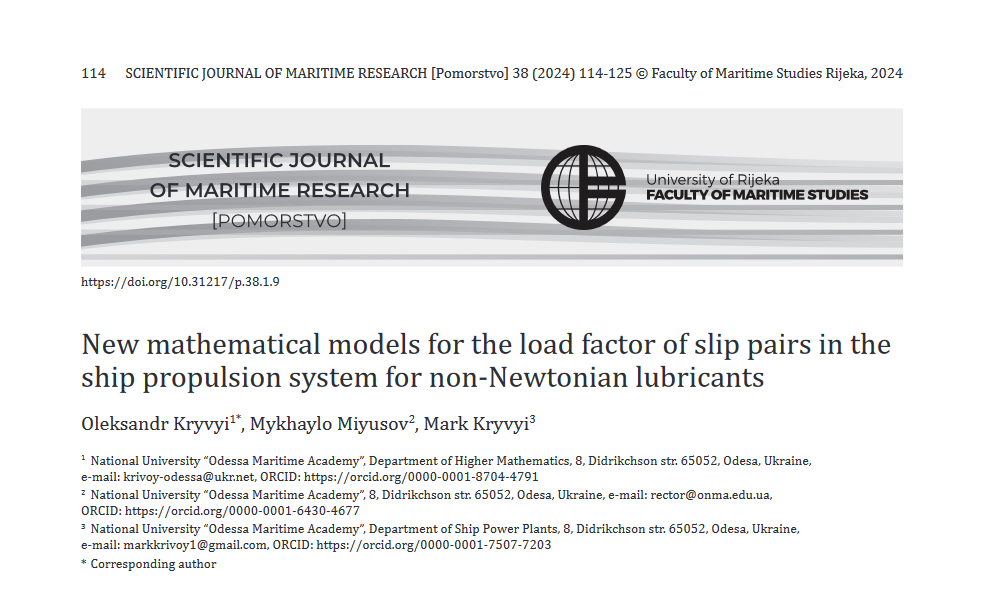New mathematical models for the load factor of slip pairs of the ship propulsion complex for non-Newtonian lubricants
Keywords:
sliding pair, Reynolds equation, ships’ propulsion system, load factor, non-Newtonian lubricants, mathematical models.Abstract
The method of boundary variation was applied to the solution of the boundary value problem with respect to the Reynolds differential equation for the lubricating layer in the sliding bearings of ship power plants and auxiliary ship equipment, which made it possible to obtain analytical representations for the hydrodynamic pressure, shear stresses, as well as the integral characteristics of the lubricating layer. This made it possible to build new, easy-to-use mathematical models for the load factor (carrying force factor) of the sliding pairs of the ship propulsion complex, considering the non-Newtonian properties of lubricants, i.e. in the case of the dependence of dynamic viscosity on pressure and temperature. Mathematical models take into account geometric parameters of bearings, operational parameters: relative radial clearance and relative eccentricity, angular velocity; as well as viscosity characteristics of lubricants, in particular, dynamic viscosity and piezo coefficient of viscosity of lubricants. A criterion for the applicability of lubricants for given operating characteristics and bearing parameters has been developed, which uses the viscosity characteristics of lubricants. The research results are illustrated in the form of tables and graphs.

Downloads
Published
Issue
Section
License
Copyright (c) 2024 Oleksandr Kryvyi, Mykhaylo Mykhaylo Miyusov, Mark Kryvyi

This work is licensed under a Creative Commons Attribution-NonCommercial-NoDerivatives 4.0 International License.
Scientific Journal of Maritime Research understands the need for authors to disseminate and maximize the impact of their research. When submitting an article for publishing in Scientific Journal of Maritime Research, it implies that the Corresponding Author transfers, with the consent of all Coauthors, the copyright ownership in the referenced submission, including all versions in any format now known or hereafter developed, to the Scientific Journal of Maritime Research.
Copyright protects your original work and research material and prevents others from using it without your permission. Others will be required to credit you and your work properly, thus increasing its impact. Should your submission be rejected or withdrawn prior to acceptance for publication by Scientific Journal of Maritime Research, this transfer will be null and void.
Authors, users or readers of an article need clear instructions on how they can use the article. Scientific Journal of Maritime Research uses the Creative Commons Attribution-NonCommercial-NoDerivatives (CC-BY-NC-ND) 4.0 International License, which governs the use, publishing and distribution of articles by authors, publishers and the wider general public.
The authors are allowed to post a digital file of the published article, or the link to the published article (Scientific Journal of Maritime Research web page) may be made publicly available on websites or repositories, such as the Author’s personal website, preprint servers, university networks or primary employer’s institutional websites, third party institutional or subject-based repositories, and conference websites that feature presentations by the Author(s) based on the published article, under the condition that the article is posted in its unaltered Scientific Journal of Maritime Research form, exclusively for non-commercial purposes.




